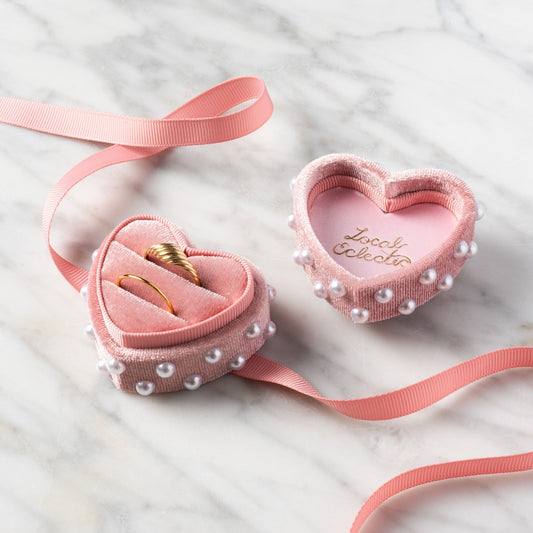Shop the look: Opal Shimmer Ring, Opal Radiance Ring, Opal Sparkle Ring
The magical birthstone of the month of October, the opal is a stone full of fiery, opalescent, kaleidoscopic glory.
Opals are our most searched, most purchased, most loved gem of all time, and it's clear why. There is no other gemstone quite as enchanting and unique as the opal. Read on for opal facts, myths, and meanings, and to discover why we're so in love with this magical stone.

Shop the look: Solid Gold Simple Opal Band, Solid Gold Opal Marquise and White Sapphire Ring, Solid Gold Triple Opal and Diamond Band
All About Opals
- Opals are one of the only gems that contain water! Anywhere from 3-21%
- 95% of natural opals can be found in Australia
- Opals were a popular stone in ancient times, and became less popular over the years until they were rediscovered in Australia in the late 1800's, beginning the resurgence of opal jewelry
- Opal is a softer stone, and can expand and contract based on fluctuations in water content. Learn more about caring for opals here
Opal Myths
- Ancient Greeks believed that opals were tears from the gods
- In India, it was believed that the goddess of rainbows was turned to stone to protect her from danger, creating the opal
- Other common myths about opals state that they can ward of evil and negativity, stabilize emotions, and even improve eyesight
Opal Meaning
- Opals are believed to spark creativity and happiness
- They're symbols of purity and truth
- The opal also represents loyalty and confidence

Shop the look: Opal Fire Ring
Why We Love Opals
- This unique gem is unlike any other, with its rainbow flashes that look completely different depending on the light
- The opal has a mystical energy to it that can't be denied. Putting on opal jewelry makes us feel like anything is possible, and that magic is just around the corner
- Opal jewelry still isn't super common, making each and every opal ring, necklace, bracelet, and pair of earrings feel extra special and unique
Different Types of Opals
- Natural Opal: Other than cutting and polishing, natural opals have not been treated, heated, or altered in any way. No two opals are exactly alike, and no other gemstone on earth can display all colors of the rainbow like a natural opal.
- Synthetic Opal: Synthetic opals are more porous than natural ones, and are therefore much lighter in weight than natural opals, but they have the same stone properties. They are lab created, and have a regular color pattern, almost like suspended glitter. Natural stones exhibit a more organic, shimmering color pattern.
- Simulated Opal: Simulated opals are not opal at all, but are made with other materials, usually glass, to mimic the glow and opalescence found in natural stones. Simulated opals are stronger and more affordable than natural opals.







